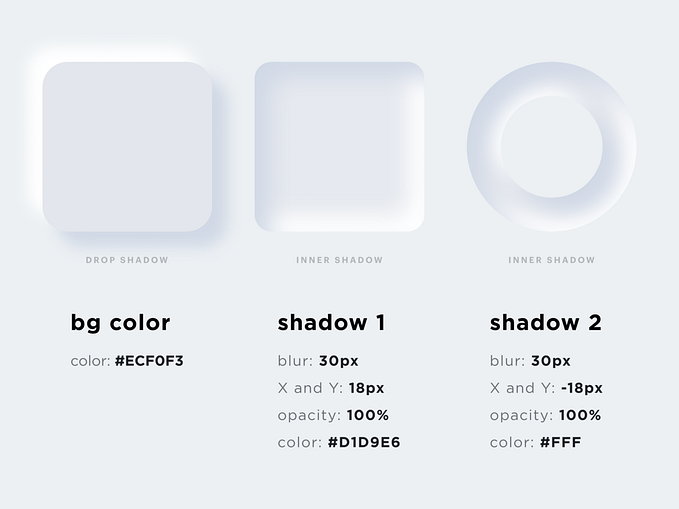Research on UX Research Portfolio
“We believe that a short and structured UX Research Portfolio for a UX Researcher will result in better results in the job market”.

Initial Approach: Why this Research?
I was thinking on making a compilation on some case studies I have related to UX Research (UXR) so I googled it and did not find many, then I decided to discover about it. I wondered how to make a UXR Portfolio, and this is why I did this little research. Maybe it can be useful for you if you are a UX Research learner, a freelance UXR, or if you just want to move forward on your career.
I have done some freelance projects as UXR, worked as a Teacher Assistant in a bootcamp, but I consider myself as a UXR learner, maybe you see controversial questions. Anyway, I encourage you to be positive, I write here my conclusions after the survey, I am sure your you can contribute with your opinion in the comments of this post, so all the community can learn.
My initial approach was to separate the idea of the UXR Portfolio from the UX Design (UXD) Portfolio. I know there are many mixed profiles but I am looking for the pure researchers, that is why I sent this survey to professional communities: Slack groups, Linkedin groups, and also people who are beginning in this area (Facebook groups, Reddit, etc.)
Value Assessment
I started working with a value assessment, following Rober Sens model. I had:
What question do we want to answer?
- We want to know how to make a UXR Portfolio relevant for the job industry market
- How to make a UXR Portfolio?
- What to include on a UXR Portfolio?
- Main problems building a UXR Portfolio
Hypothesis
- A good UXR portfolio is the best way to access the job market
- Building a Portfolio is not easy, takes a lot of time and effort
- Storytelling your UXR Portfolio is a point
We believe that
- A consistent UXR Portfolio can lead you to a job interview or job pitch
- Storytelling will make your UXR Portfolio stand out
- We can get clear guidelines to build a UXR Portfolio
UX Research Portfolios insights
- You can find them at the end of this post. I grouped insights and prepare a little script so as to prepare the online survey
Who should we talk to?
- UX Researchers — They can give us their experience, insights and resources
- UXR Recruiters — People looking for UXR profiles. They can give us industry needs
- UXR Learners — We can know difficulties when building a UXR Portfolio
You can see the whole document here. With this info I jumped into preparing the survey.
Making the Survey


If you did not see the form is still available right here:
Answers to the Survey
Here are the answers, at this point I have almost 70 answers, I will comment my impressions, if you want to contribute you can comment at the end of the article.
How do you self-identify?

About demographics we can clearly say there is a majority of women.
What is your age?

Some stats:
- 45.3 % between 30 and 39 years
- 34 % between 20–29 years old
- 15.1 % between 40–49 years old
- There is a 79.3 % of surveyed between 20 and 40 years
- There is a 94,4 % of people surveyed between 20 and 50 years old
I tend to think the point here is there are many people getting into UXR from other backgrounds.
Where are you based (country) ?

This is such a colourful panorama! There are 25 countries. I am from Spain so maybe that is the reason why there are many participants from my country.
What is your main role?

No Recruiters here. I suppose there is not a “UXR Recruiter Specialist” by now. There are just Recruiters in general. The ones who really are, are also UXR professionals, I have some good contribution from a recruiter at the end of the survey.
Definitely we should talk to recruiters in this area, maybe from companies or social media sites specialised in the area.
What is your background?

A lot of people with design background, psychology, ethnography and many other backgrounds. Engineering is a 7.5 %, Ethnography 4 % and Analytics 2% . No pure profiles, we are all immigrants here in UXR. Should I ask when is the moment when someone decides to turn into a UX Researcher?
Do you have a UX Research Portfolio?

Almost 85 % of people surveyed has a UXR portfolio or is building it. But if you google them I assure you will not find so many. Maybe there are a a lot of mixed profiles. I have some good examples and references of strictly UXR Portfolios, you can see them in the initial insights (end of the article).
Do you think a UX Research Portfolio is needed for the job market?

I expect this 66 % to increase in the next years (also happened with UX Designers and UX Writers).
Which do you consider the most Important document for the job market?

¿Portfolio or resume? Maybe both. Some say a resume does not tell anything, but what if you have a Phd?
According to your experience regarding UX Research Portfolios:

Only a 7.5 % regarding UXR Portfolios. Everything is a mix.
How long does it take you to review a UXR Portfolio?

This is clear, make something to call the attention of the recruiter, could be storytelling, could be your narrative, assets, etc.
Do you agree with this structure for a UX Research Portfolio? About Me — Case Studies — Contact

Really really simple structure for a portfolio, some say not to add social links to your portfolio, you do not want users going to other site.
How many case studies do you think a UX Research Portfolio should have?

3 or 4 case studies! I also rode in the insights not to post case-studies with more than three/four years.
What do you think is the most important point in a case study?

This is a tricky question. Some people told me this should be multiple choice, but I wanted to know what was the decision. Even more ,I added the answer “All of them” to go lean when I had 70% of the answers, so I suppose this would have been the most answered.
Anyway, the answer is clear and it is all about the process. How do you do Research? How do you distribute time? What are your hypothesis? Which methodologies do you use and why? What conclusions do you have?
Which of the following case studies structures you prefer?

This one could have been multiple choice also. I learnt here that STAR methodology is only for job interviews. The others are quite similar, but have some differences. I think they call them UX Research frameworks. What they say is that you should use same methodology for all your case-studies (see insights).
Do you consider storytelling for case studies?

Maybe I should have asked: Does your UXR Portfolio has storytelling? If the most important point is the process and everyone looks for storytelling maybe you have a point if you tell a story with your process.
What is the best format for a UX Research portfolio?

So, whether you make first your online portfolio or your pdf portfolio, you should do both. Maybe if you are a designer second chance (pdf) is easier for you. The general opinion is that the online portfolio should be short, and in the PDF Portfolio you can go deeper. You could do both and in the online version link to the pdf in case someone wants to go deeper.
What tools do you prefer to use for a UX Research portfolio? (mark as many as you want)

Here you can answer many. I was surprised in the initial research that I found so great portfolios with Wix (some designers don´t like it).
If Other specify which tool do you use?
I had also Webflow with many votes, Medium, other blogging sites, Miro, Notion, Sketch, Figma, just a doc, etc. My conclusion here is that the platform you use is not as relevant as it can be for a UX Designer.
Can you tell us where how did you get to this form?

Well this question is not necessary, you can do it easily at Airtable (I learnt it!) or in TypeForm if you have a pro account. I am here making guerrilla research so I chose Google Forms.
Thanks again to all people contributing to the survey. Some people asked me about these communities: For the Slack Groups you can see in this UserInterviews post or in dScout the most important (for podcast here). I asked all these:
- Slack (ResearchOps, User Research Academy, UX Mastery, MixedMethods, Ethnography Hangouts, Designer Hangout, Design:ES)
- Reddit (User Experience, UX Research, Hybrid UX Research)
- Facebook groups (User Research Collective, User Experience Professionals Association — UXPA, The UX Blog — User Experience Design, Research, and Strategy, Design Research, European Research Collective)
- Linkedin groups (EPIC People, Elastic Heads)
- Interaction Design Foundation
- Medium
I had some constraints here: There are some communities not accepting an online survey, but you can make a poll, what is this nonsense?
If you want to add any other comment or thought you can do it here:
I had also some posts about the questions but I removed them from here. Of course some of them could have been multiple choice or were too closed options. Here some good opinions:
“It’s a never ending process and more of a balancing act i.e., employer’s domain vs your experience, Skimmable vs Thorough, Insights vs NDA and also Pure Researcher vs Hybrid(UXR+D). I resisted to design my portfolio for a long time along side work but when I finally did, it helped me get my foot in the door often.”
“In my experience, it depends on the hiring manager if they care about seeing a portfolio or not. Some hiring managers either don’t look at it or barely glance, while others want to dig into portfolios. In my opinion, it’s best to keep a portfolio just in case you run into the latter! But being able to present your portfolio is a cohesive manner during an interview is key”.
“Portfolios are all about explaining your process and that is the most important part!”
“I took this survey because I rarely see good discussions on research portfolios, so interested to see where this goes. Most portfolios I see are from people who transitioned to research from a design role. In comparison, people coming from social science or academic research backgrounds tend to not have a portfolio (or at least not what UX considers a portfolio). So when hiring for research roles I think one must be flexible because of how different training/backgrounds shape someone’s application materials”.
“When I’ve been on the other side of this and involved in the hiring process, I prefer not to require a UXR portfolio. I find it’s usually designers looking for research positions when I see portfolios and so they are heavy on here’s how this impacted designs but what I’m interested in is how did you define the research questions, why did you choose that methodology, how did you make sense of the data you collected? One thing that I also am interested in are do you understand the limitations of the methodology and analysis and I think that’s pretty hard to convey in a short case study”.
“I want to find the right structure for UXR case studies too. It’s should be different from UXD”.
Learnings
- UX Research Portfolio is becoming more and more relevant. Doing it clean, short and well structured is a must
- We need to speak to UX Research recruiters
- I have learn to build forms with Google, TypeForm, SurveyMonkey and Airtable. This last one I really like as it is in the #nocode movement.
- I have some demographic bias, also some questions could be improved or give more options
- I wonder how the research would be if we point for example to “UX Writers” or “UX Designers”
- Had some constrains on getting users, maybe not an easy target specially if I am doing guerrilla and remote research
Conclusions
Based on the research here are some good recommendations to take into account:
- If you want to make a career as UX Researcher you will need definitely a UX Research Portfolio
- You should make two versions: Online portfolio (website) and a .pdf portfolio (presentation/slides). Online should be shorter
- Your portfolio structure should be easy. A good example is three sections: About Me — Case Studies — Contact. Do not link too many Social Media accounts, just the ones related to UXR
- 3 or 4 Case studies is the perfect number
- The most important point in a Case Study is your Research Process
- You can follow different structures for your Case Studies, but use the same for all of them. One of the best valued is: Problem/Approach/Process/Artifacts/Impact/Learnings
- Once you have your Case Study ready, you should think on a way of storytelling it as it becomes really relevant. There is an article from NNGroup about persuasive storytelling. There are also many techniques, I like the periodic table of storytelling.
Proposal
As a matter of fact, the hard work of doing a portfolio is to prepare it. Here is a UX Research Portfolio Canvas you can use for your portfolio, you can download both as .pdf here (A3)
This is the UX Research Portfolio Canvas for several case studies:

And this is the UX Research Portfolio Canvas for a case study:

Next Steps
Still some work to make, by now I am here:

More resources and Insights on UXR Portfolios
- Rachel Flemming — FAQs about User Experience (UX) Research — http://www.rachelfleming.net/faqs
- Patrick Neeman — The UX Portfolio, telling your story — http://www.usabilitycounts.com/2013/01/17/the-ux-portfolio-telling-your-story/
- Lynn Teo — Portfolios matter — https://www.slideshare.net/lynnteo/portfolios-matter
- EMERSON SCHROETER — How To Build A UX Research Portfolio (Step-By-Step Guide) — https://careerfoundry.com/en/blog/ux-design/ux-research-portfolio-guide/
- Tímea Falmann — The Ultimate Guide to Building a UX Research Portfolio — with Great Examples — https://blog.uxfol.io/ux-research-portfolio/
- Lexie Kane NNGroup — Portfolios for UX Researchers: Top 10 Recommendations — https://www.nngroup.com/articles/ux-researcher-portfolio/
- Nikki Anderson — Storytelling for a UX research portfolio — https://uxdesign.cc/storytelling-for-a-ux-research-portfolio-35c9da4a8df1
- JAY KAUFMANN — Portfolio Advice for a UX Researcher — https://www.uxswitch.com/portfolio-advice-for-a-ux-researcher/
- H Locke — Tips for UX research portfolios — https://uxplanet.org/tips-for-ux-research-portfolios-d153d06c8d37
- Susan Todd Senior Ux Researcher — Research Portfolios (Amazon) — https://umich.instructure.com/files/5001836/download?download_frd=1
- Brittany Mederos — Crafting Your UX Portfolio — A Weekend Guide to Getting It Done -https://writing.enchant.co/crafting-your-ux-portfolio-a-weekend-guide-to-getting-it-done-632e13acd3d1
- Interaction Design Foundation — How to create a UX Portfolio — https://www.interaction-design.org/courses/how-to-create-a-ux-portfolio
- UX Research Portfolios: Format + Examples — Paul Derby — https://www.linkedin.com/pulse/ux-research-portfolios-format-examples-paul-derby/?articleId=6656846413542023168
- 15 Things to Consider for Your UX Portfolio — Loe Lee — https://medium.com/@hiloelee/15-things-to-consider-for-your-ux-portfolio-7a5827d13470










